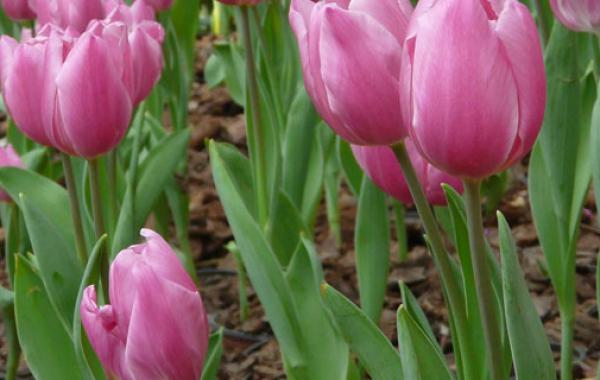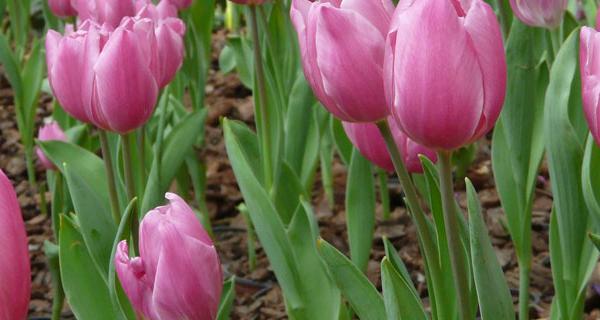How to select flower herbicides in nursery
Flowers in the nursery can afforest the environment and purify the air. However, some weeds will inevitably appear in the process of flower planting in the nursery. The selection of herbicides should not only prevent the direct damage to the lawn of flower seedlings, but also prevent some potential, possible and recessive harm. So as not to cause irreparable damage to the yield, quality and surrounding environment of flowers, seedlings, lawns and the surrounding environment.
1. Post-seedling herbicides to control broad-leaved weeds
Bentazon, Baicao enemy, make it long, Huwei, herbicide, Haoshi, 2 A 4 chlorine, etc., can not be used in nursery, garden, Dichondra lawn.
2. Post-seedling herbicides to control Gramineae weeds.
Post-seedling herbicides such as high-efficiency cover grass, Jingshengshou, fine grass gram, Najiaojing, Shoulotong, Pit and other post-seedling herbicides are not suitable to be used in Gramineae lawns. this kind of herbicides can not only control Gramineae weeds, but also harm the lawn.
3. Herbicides with long effective period
Sulfonylurea herbicides such as chlorosulfuron, metsulfuron, benzenesulfuron, picosulfuron, monosulfuron, aminobenzenesulfuron, nicosulfuron, imidazolinone herbicides such as propoxide, heterocyclic herbicides such as Quanshu, Guangmieling, etc. These herbicides last too long in the soil. In nurseries where these herbicides have been used, flower seedlings planted after 3 years may be damaged. Metsulfuron will cause spray on tall fescue lawn and cause yellowing and death of tall fescue grass. Trimethoprim can cause albinism of lawn plants.
4. Herbicides that are toxic to soil.
Some herbicides of amides, ureas, triazobenzenes and alachlor, Acetochlor, Fucaolone, Securon, simazine, atrazine, prometryne, cottongrass and so on. If these herbicides are applied in the lawn, it will affect the root system of lawn plants in the case of stagnant water, and then affect the development of lawn plants; in the place of continuous application, it will cause soil structure deterioration and consolidation, affect the ventilation of the soil around the roots of lawn plants, and then cause lawn plants to yellowing.
5. Highly toxic or carcinogenic herbicides
Pentachlorophenol sodium and paraquat are highly toxic and are banned in nurseries and lawns. Herbicide ether has been banned in many countries because of carcinogenicity, and it has been banned in China since 2000. Lasso has carcinogenic effect on animals and is not suitable for use. Trifluralin has been banned in Europe because of carcinogenesis.
6. Herbicides with drift pollution
There is a big problem of drift pollution in the enemy of grass and grass, Dazhuang and so on. Generally, there are flower seedlings around the lawn, spraying herbicides such as herbicide and grass strong on the lawn will affect the growth of the surrounding flower seedlings.
7. Odorous herbicides
If the smell of 2-methyl-4-chlorine is irritating to people, it will have an effect on people's stomach after inhalation, and it will also produce drug damage to seedlings, so it is not suitable for use.
8. Sterilized herbicides
Such as glyphosate (Nongda), paraquat (gram without trace) and so on. Although some seedlings have a certain tolerance to low-dose glyphosate, sometimes the damage caused by glyphosate to seedlings is difficult to judge intuitively, and sometimes the damage is slow, and it is inevitable to drift when spraying glyphosate, which can cause damage to the surrounding sensitive flowers and seedlings.
In addition, herbicides with wide herbicide spectrum, moderate efficacy period, good eradication effect and no pollution should be selected according to different needs, varieties and periods. Today, let's share with you how to choose herbicides when using herbicides in nursery flowers.
Related
- What if the leaves of potted flowers turn yellow?
- Florescence Control of several Flowers
- Anti-freezing technology and post-freezing nursing technology of flowers
- What is the classification of flowers? What are the common methods of flower classification?
- Prevention and control of alkali and acid damage of flowers in courtyard
- Technology of Anti-freezing and restoring growth of Flower seedlings in greenhouse and greenhouse
- How does flower fertilization not hurt the root? Fertilization technology of flowers
- Key points of disinfection in flower greenhouse
- Several pesticides that are banned or used cautiously in flowers
- How to fertilize the flowers that watch the leaves?



